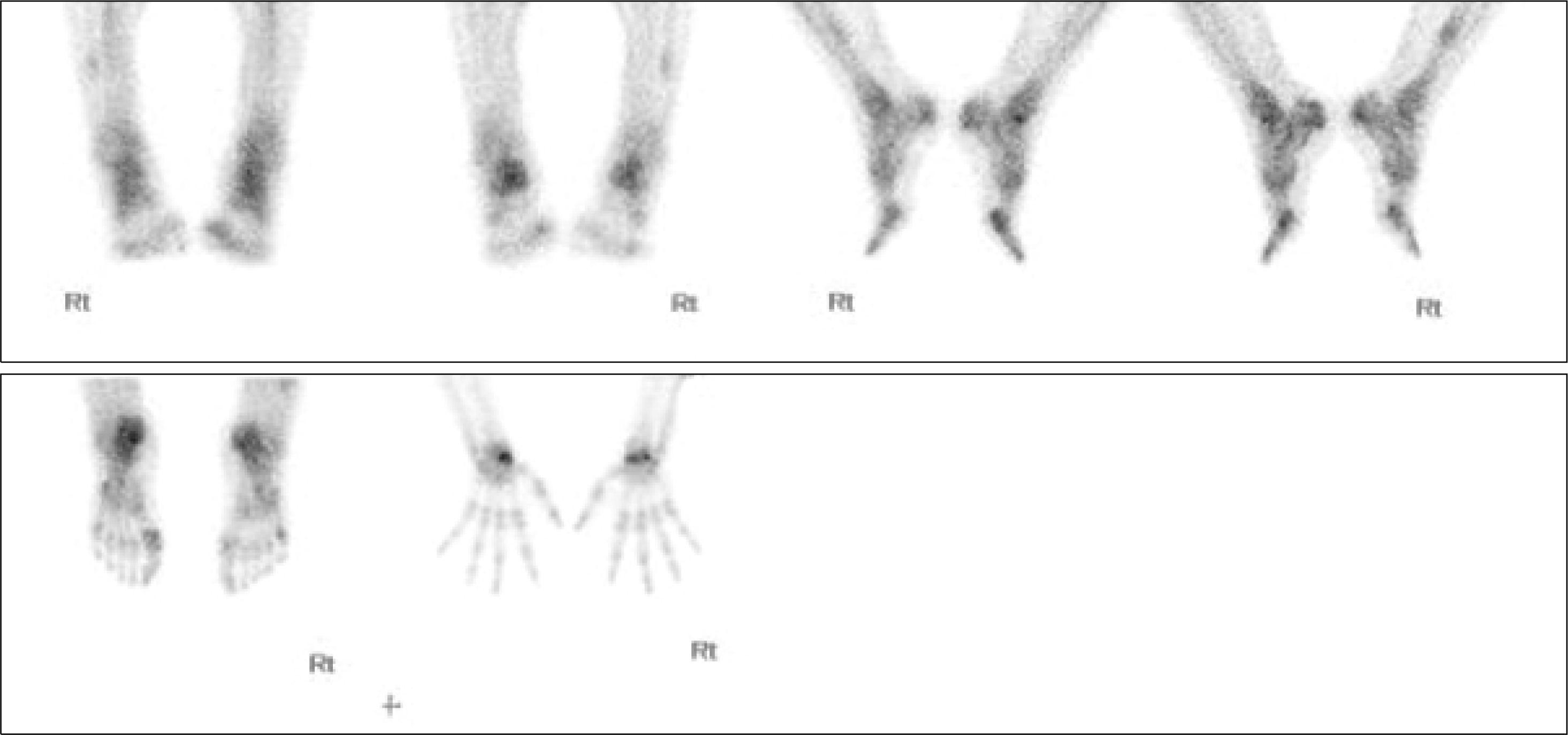Abstract
Idiopathic hypereosinophilic syndrome (HES) is a disorder characterized by the sustained overproduction of eosinophils and multiple organ damage. Rheumatologic manifestations of HES are infrequent, but persistent eosinophilia is observed in approximately 10% to 40% of patients with rheumatoid arthritis (RA). This finding may be a result of the RA itself and is often associated with active disease and the presence of extraarticular features. We describe the case of a 48-year-old man affected by HES who subsequently developed RA. Both HES and RA responded rapidly to the corticosteroid and methotrexate therapy. In this patient, the initiation of RA and HES was related, suggesting a common pathogenetic link between these two diseases.
Go to : 
REFERENCES
2. Chaudhuri K, Dubey S, Zaphiropoulos G. Idiopathic hypereosinophilic syndrome in a patient with longstanding rheumatoid arthritis: a case report. Rheumatology (Oxford). 2002; 41:349–50.

3. Winchester RJ, Koffler D, Litwin SD, Kunkel HG. Observations on the eosinophilia of certain patients with rheumatoid arthritis. Arthritis Rheum. 1971; 14:650–65.

4. Aletaha D, Neogi T, Silman AJ, Funovits J, Felson DT, Bingham CO 3rd, et al. 2010 Rheumatoid arthritis classification criteria: an American College of Rheumatology/ European League Against Rheumatism collaborative initiative. Arthritis Rheum. 2010; 62:2569–81.
6. Bain BJ. Eosinophilia–idiopathic or not? N Engl J Med. 1999; 341:1141–3.
7. Seifert M, Gerth J, Gajda M, Pester F, Pfeifer R, Wolf G. Eosinophilia–a challenging differential diagnosis. Med Klin (Munich). 2008; 103:591–7.
8. Brogadir SP, Goldwein MI, Schumacher HR. A hypereosinophilic syndrome mimicking rheumatoid arthritis. Am J Med. 1980; 69:799–802.

9. Prattichizzo FA, Bernini L. An idiopathic hypereosinophilic syndrome mimicking seronegative rheumatoid arthritis: 20-year follow-up with clinical and laboratory findings. Clin Exp Rheumatol. 1992; 10:79–81.
10. Martín-Santos JM, Mulero J, Andréu JL, de Villa LF, Bernaldo-de Quirós L, et al. Arthritis in idiopathic hypereosinophilic syndrome. Arthritis Rheum. 1988; 31:120–5.
12. Bonanno D, Fedele R, Minciullo P, Quattrocchi P, Ferlazzo B. Idiopathic hypereosinophilic syndrome associated with rheumatoid arthritis. A case report. Reumatismo. 2003; 55:181–3.

Go to : 




 PDF
PDF ePub
ePub Citation
Citation Print
Print




 XML Download
XML Download